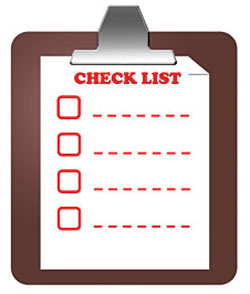
|
I recently did a webinar for a group of kitchen and bath dealers on the subject of marketing.
It prompted me to think about the wholesale showroom and independent decorative plumbing and hardware showroom businesses. Having the pleasure of consulting with these nice people for the past 15 years, I’m aware of the challenges they have in the important area of marketing.
Wholesalers in particular historically haven’t had to be great marketers. Their target customers have been contractors. They didn’t have to do a lot of advertising, promotions and public relations to attract consumers or homeowners to their businesses. As they have made more of a commitment to showrooms, this need has changed. As I’ve so often stated in the past, wholesalers are good at the wholesale side of the business, but have been slow to learn how to be a first-class retail business. These are two very different operations!
Having said that, what should you do to become the very best marketers you can be? There are three main areas to managing almost every business: financial, human resources and marketing. All three have to be strong in order to have a well-balanced business. Is your showroom strong in all three areas?
To put us all on the same page please allow me to share the definition of marketing I used in the business-management book I recently completed a rewrite on for the National Kitchen and Bath Association. First, we all know that no sales will be made without customers. That is what marketing is all about, finding customers, enticing them to look at, and then buy your products and services.
- Marketing is the process through which you create and keep customers.
- Marketing is the matchmaker between what your business sells and what your customers buy.
- Marketing covers all the steps involved to tailor your products, messages, distribution, customer service and all other business actions to meet the desires of your most important business asset – your customers.
- Marketing is a win-win partnership between your business and its market.
And to be clear, selling is not a substitute for marketing. Selling is just one of the means that allows you to communicate your marketing message to your clients.
There are a number of pieces to the marketing puzzle:
- There needs to be a detailed written plan and budget.
- This plan must be measureable and achievable.
- The plan will typically include ads, promotions, public relations, a website, social media and a sales strategy.
Okay, why is doing a first-class job in the marketing area so important? First, you must continue to do everything possible to continue to attract new customers to your business. It’s also important to keep your name and activities in front of existing and past customers. You must continually be working to develop and grow your image and brand in your marketplace. The job of letting folks know who you are, where you are, what you do and why you do it better is a never-ending assignment.
There are a number of specific things you must do to become a really good marketer:
- You must develop and follow a detailed marketing plan and budget. My experience in working with many of you is that you fall short in this area.
- You have to spend money to make money. A trite, but true statement!
- Those responsible for your marketing efforts must be creative and innovative.
- If you are not good at this seek outside professional help. There are some excellent, creative and affordable people in almost every marketplace. Put them to work for you.
I mentioned the terms “brand” and “image” a little earlier. A brand is the image and perception that comes to a client’s mind when they see or hear your name/logo. A strong brand communicates what your company does, how it does it and what makes your showroom better, different and more unique. It helps establish long-term trust and credibility.
Here are a few branding tips:
- Be unique. Offer products and/or services your competition doesn’t. Do a better job laying out the showroom and displaying your products. Have the best-trained staff in your marketplace.
- Grow your community. This is a relatively new term that has grown out of using social media. It simply means get as many folks as possible looking at you, talking about you and saying positive things about you. One person tells another and another, and pretty soon your community grows.
- Take a look at the name and business logo for your showroom. Is it current, up-to-date and relevant? Does it tell people who you are and what you do? If these are out-of-date or don’t do what they should then change them! You can have a fun, rewarding marketing campaign that will bring a whole new group of potential clients to your place of business.
- Be sure you offer a terrific package of products and services. Do you simply show and sell the traditional group of wholesale plumbing products just like every other wholesaler in town? Or do you truly offer a unique package of everything for the bath and kitchen? One-stop shopping is what your client wants. Do you offer this?
- Be consistent in everything you do. If you show and sell higher-end products, everything should look, feel and sound higher end. Consider everything from what the showroom looks like to how you dress, what your website and advertisements look like, and the quality of service you offer.
- Deliver the very best total value package. This means having the best-trained staff, the best package of products and services, and being “easy” and fun to work with. Remember what I keep repeating, when you deliver great value, you make price become less important.
Formulate that plan
Early on I mentioned you must develop a detailed, written marketing plan and budget. The best time to do this is at the beginning of a new year. But if you don’t have one, then don’t wait. Do it now. This is your road
map/GPS that will be your all-inclusive marketing guide. It will tell you how many dollars you’re going to spend, where you’re going to spend them, when they will be spent and what your overall goals in the area of marketing will be. I can’t emphasize enough how very important this is. Don’t do your marketing by the seat of your pants like so many folks out there.
Here’s what a marketing plan and budget will do for you:
- States your business purpose.
- Defines your market situation.
- Sets goals and objectives.
- Defines your market.
- Helps advance your position, brand and creative strategy.
- Sets your marketing strategies.
- Outlines your specific tactics.
- Establishes your budget.
- Serves as your blueprint and action plan.
- Encourages you to think long term.
Oh how I wish I could go into detail on each one of these important points. In the business-management book I wrote for NKBA, there is a full chapter on marketing that details all the things I just covered. You’ll find a lot of other valuable information that will help you run your showroom business.
Marketing costs money! So how much money do I advise people to invest in promoting their showroom business? The answer is between 3-5% of total showroom sales. You should be able to recoup about 1.5% in co-op dollars from your vendor partners. The size of your marketplace and the quantity and quality of your competition also play into this formula. There are so many different opportunities where you can spend your money. You could very easily go broke if you don’t have a well-thought-out plan.
Next time I’ll get more specific on what I believe works best and what you need to do to track the results of your marketing-dollar investment. In the meantime, get those marketing flags ready. The higher and better you wave them, the more business you’ll be enjoying!
Helpful Links:




